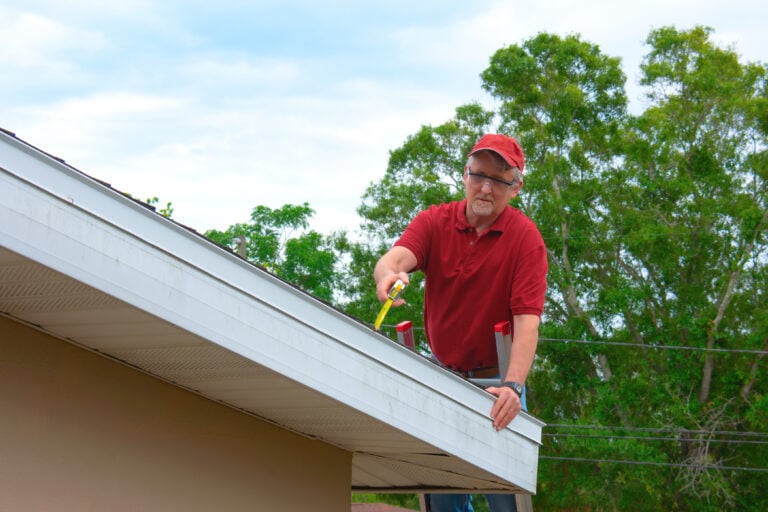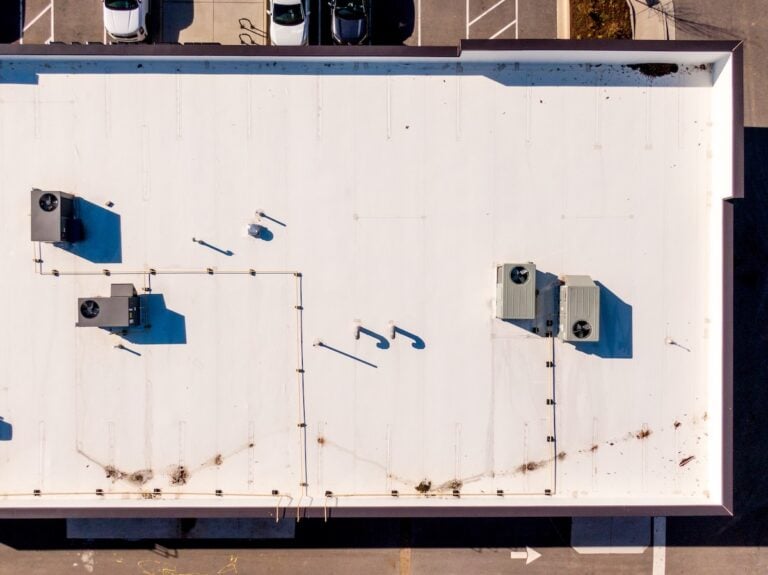TPO vs PVC Roofing: Which Is the Best Roofing Material?
When deciding on the best material for a flat or low-slope roof, many property owners weigh the pros and cons of TPO vs PVC roofing. Both options are highly regarded in the roofing industry and are designed to provide long-term protection, energy efficiency, and durability. However, the differences between them can affect lifespan, cost, and overall performance.
These two roofing systems are often considered when homeowners and businesses explore reliable roofing solutions that go beyond traditional shingles. Understanding their differences can help you make an informed choice and ensure your investment pays off.
In this guide, we’ll cover:
- Why TPO vs PVC roofing matters for property owners
- The top five differences between the two systems
- Types, options, and design considerations
- Extra insights into warranties and maintenance
- How to choose the best system for your home or business
Why TPO vs PVC Roofing Is Important
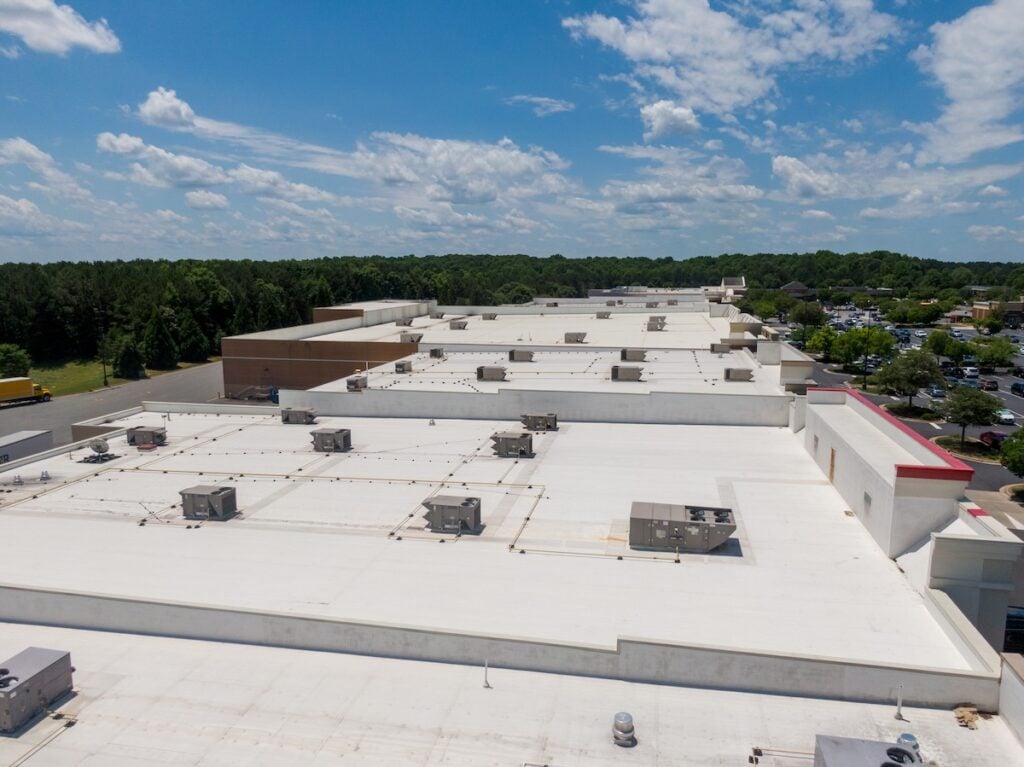
Choosing the right material for your roof is about more than just appearance—it directly impacts protection, efficiency, and cost savings. Flat and low-slope roofs face challenges like pooling water and direct sun exposure, which makes choosing between TPO and PVC especially critical.
- Durability: Both materials are tough, but PVC often lasts longer.
- Energy Efficiency: Reflective white membranes help keep energy bills lower.
- Weather Resistance: Proper installation prevents leaks, wind damage, and UV deterioration.
- Cost Savings: TPO costs less upfront, while PVC offers longer-term value.
- Sustainability: TPO is recyclable, and PVC provides sustainability through long service life.
Understanding why this choice matters helps homeowners and business owners make smart, long-lasting investments.
5 Key Comparisons Between TPO and PVC Roofing
When comparing TPO vs PVC roofing, several categories stand out as the most important for decision-making. These include material composition, lifespan, chemical resistance, seam strength, and cost.
1. Material Composition
TPO (thermoplastic polyolefin) is made from a blend of polypropylene and rubber. It is flexible, lightweight, and cost-effective. PVC (polyvinyl chloride) is plastic-based and reinforced with additives that improve strength and chemical resistance.
- TPO = eco-friendly, affordable, newer technology
- PVC = durable, chemical resistant, long-proven
2. Lifespan
TPO roofs typically last between 15–20 years with proper care. PVC roofs can often last 20–30 years, making them a better long-term investment for property owners planning to stay put.
- TPO = shorter service life, lower cost
- PVC = longer-lasting, fewer replacements needed
3. Chemical Resistance
PVC performs exceptionally well when exposed to oils, grease, and industrial pollutants, which makes it popular for restaurants and commercial facilities. TPO is still durable but not as resistant in chemically heavy environments.
- PVC = excellent for high-exposure environments
- TPO = ideal for residential use without chemical risks
4. Seam Strength
Both systems are installed using heat-welded seams, which provide strong and watertight bonds. PVC seams tend to outperform TPO in long-term durability, making them more resistant to leaks over time.
- PVC = stronger seam integrity
- TPO = dependable, though less proven in long-term seam strength
5. Cost
Cost is often the deciding factor. TPO is generally $5.50–$7.50 per square foot installed, while PVC costs $7.50–$9.50 per square foot. While PVC is more expensive upfront, it usually delivers a stronger return on investment over its longer lifespan.
- TPO = cost-effective and quick to install
- PVC = higher initial investment, longer-term value
Types, Options, and Design Considerations
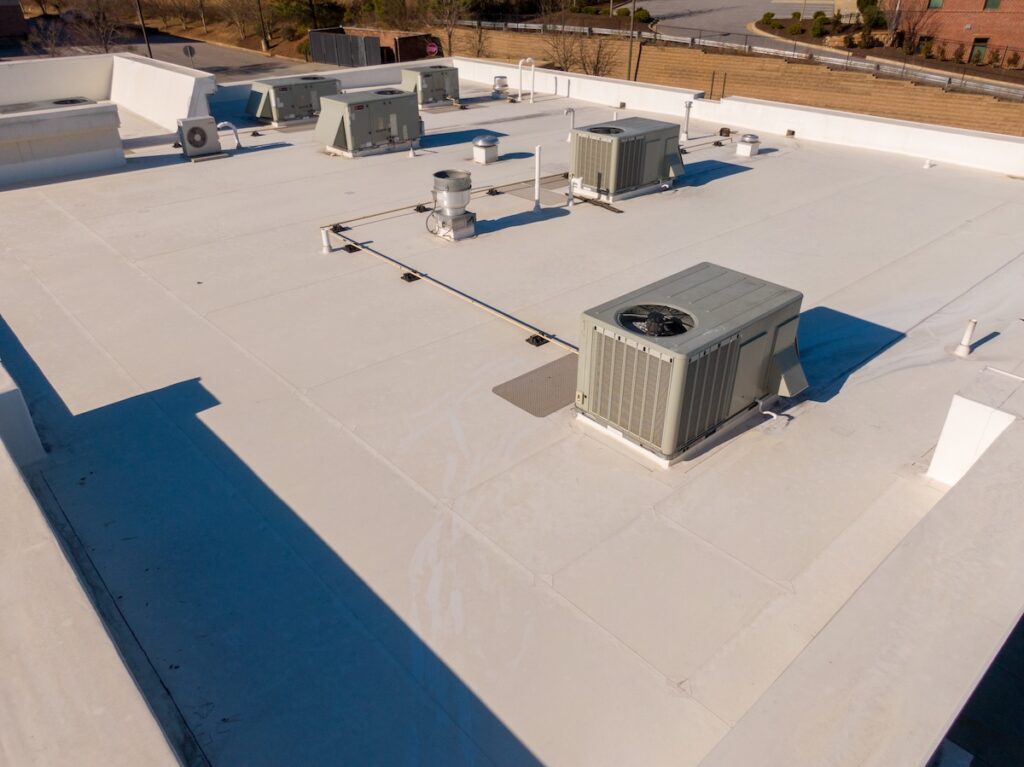
The choice between TPO and PVC is only part of the process. The type of system you choose, the thickness of the membrane, and the installation quality all impact performance and durability.
- Membrane Thickness: Both TPO and PVC are available in 45, 60, and 80 mil thicknesses. Thicker membranes are better for withstanding harsh climates and foot traffic.
- Color Options: White is the most common due to its energy efficiency, but custom colors are available to match architectural styles.
- Climate Suitability:
- TPO excels in hot, sunny regions due to strong UV resistance.
- PVC performs best where chemical exposure is possible or maximum durability is needed.
- Installation Quality: Even the best material can fail if poorly installed. Proper seam welding, insulation placement, and flashing details are essential for a leak-free roof.
Warranties and Maintenance Considerations
Material choice matters, but so does what happens after installation. Warranties and proactive maintenance are key to getting the best performance from your roof.
Manufacturer Warranties
- Length: Typically range from 15–30 years depending on membrane thickness.
- Value: Longer warranties usually reflect greater confidence in product durability.
Installer Warranties
- Coverage: Protects against workmanship issues.
- Peace of Mind: Reputable contractors back their installations with strong guarantees.
Maintenance Practices
- Inspections: Twice-yearly inspections catch small problems early.
- Cleaning: Keeping drains and surfaces clear of debris prevents ponding water.
- Repairs: Addressing minor seam issues quickly prevents costly water damage.
By combining warranties with regular upkeep, you’ll extend the lifespan of your roof and maximize your investment.
Material Options, Cost Factors, and Other Insights
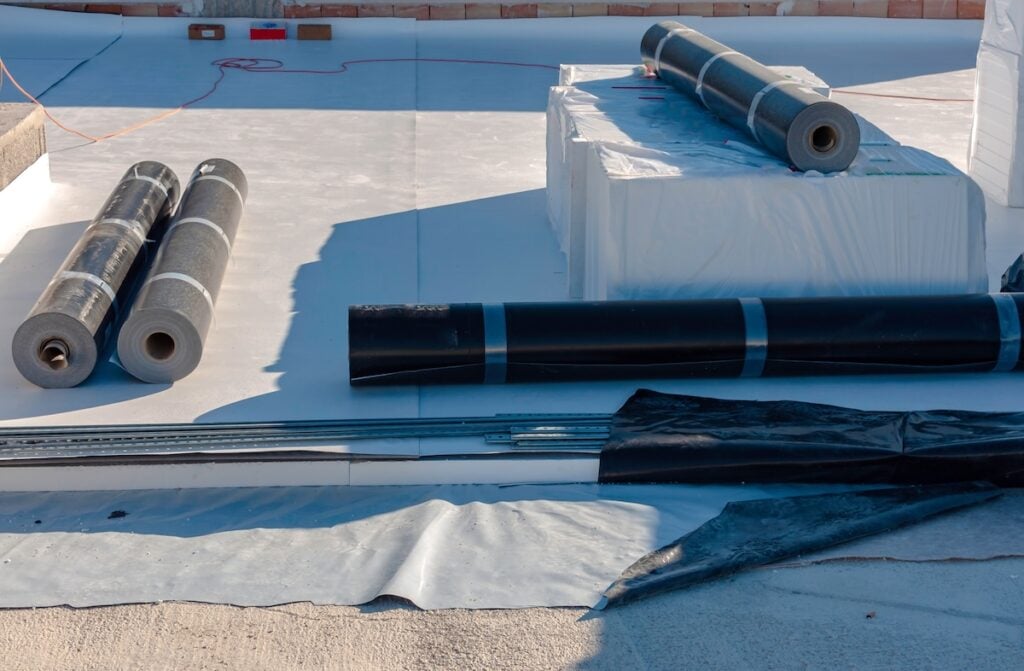
Looking at TPO and PVC side by side helps clarify their pros and cons. Both deliver excellent protection, but the best choice depends on your priorities.
TPO Roofing
- Pros: Affordable, recyclable, reflective surface, lighter weight.
- Cons: Shorter lifespan, less chemical resistance, newer technology.
- Average Installed Cost: $5.50–$7.50 per square foot.
PVC Roofing
- Pros: Long lifespan, strong seam durability, excellent chemical resistance, decades of proven results.
- Cons: Higher upfront cost, heavier material, less eco-friendly to produce.
- Average Installed Cost: $7.50–$9.50 per square foot.
Additional Cost Factors:
- Roof size and slope
- Insulation type and thickness
- Membrane thickness chosen
- Installation complexity (vents, skylights, HVAC units)
- Warranty options from manufacturer and installer
While TPO offers a lower initial cost, PVC often pays off in the long run for those prioritizing durability and fewer replacements.
TPO or PVC Roofing
So which is the better choice in the TPO vs PVC roofing debate? It depends on your property’s needs.
- Choose TPO if your priority is affordability, energy efficiency, and eco-friendliness.
- Choose PVC if you want maximum durability, stronger seam strength, and superior chemical resistance.
No matter which you select, proper installation is the most important factor in your roof’s success. At Cabezon Roofing, we provide expert guidance, professional installation, and strong warranty options to ensure your roof protects your home or business for decades.
Ready to explore the right roofing solution for your property? Contact Cabezon Roofing today to schedule a consultation and find out whether TPO or PVC is the best fit for your roof.
